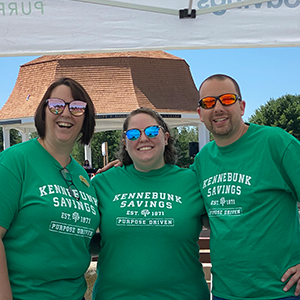
As adults, how we handle finances sends a powerful message to children. That’s why it’s important to model the healthy money management behaviors that we want the kids in our lives to adopt.
Noted below are seven ideas to help shape children’s attitudes and behaviors around finances. These everyday lessons provide opportunities to intentionally model good money management.
1. Share the story of money in everyday life: Even for younger children, aged 4 or so, everyday activities like shopping or family outings provide a chance to talk about using money. Demonstrate using different forms of money – coins, dollar bills, and credit or debit cards. Have them consider the things that cost money – toys, groceries, trips to the fast-food restaurant, or admission to the zoo or a water park. Be sure to point out things that have value may still be free. For instance, helping a neighbor, visiting a playground, or spending time playing with a friend is fun and doesn’t require money.
2. Point out the ways adults earn money: Discuss how you or other family members or friends earn money. Guide younger children to consider that the professionals they meet each day are paid an income – such as teachers, bus drivers, mail carriers and others. Brainstorm with pre-teens or older kids about how they can earn their own spending money by dog walking, yard work, babysitting or other tasks.
3. Build a basic budget: Age 8 or so is a good time to work with kids to build a simple budget, allowing them to plan out their spending for a set time or a special event. Start simple with a written spending plan for the upcoming week. A budget conversation can include measures for older kids to earn an allowance. For teens, work with them to set up an account that has a set monthly amount, where they can withdraw money for gas and incidentals; and when it’s gone, it’s gone.
4. Plan out purchases: For kids of all ages, making a list before going to the store helps reduce impulse decisions. Have your child help list out everything you need before leaving the house. Then when they ask if they can have something else, remind them that it’s not on the list. For older kids, introduce the idea of waiting to buy something they want. Delayed gratification is a hard concept even for most adults. For any items on a “wish list,” talk about how much it costs and help them plan for the money required to purchase it.
5. Be a smart shopper: When grocery shopping or making larger purchases, have your child help locate coupons or sales. Bring children along when comparison shopping so they can understand price differences. Set aside enough time so kids can help you scout out the best prices when buying clothes or preparing for a party. For older kids, read reviews and compare items when online shopping
6. Model good use of credit: Introduce children to the idea of buying things with credit. As an example, let the kids witness you swiping your card at the gas station. Remind them that you’re borrowing money to fill up the tank and you’ll have to pay back the purchase (possibly plus interest). When the credit card bill for that purchase arrives, review it with the kids. Highlight the importance of honoring your agreements with the lender by making on-time payments and keeping balances low. For older kids, introduce the topic of a credit score and credit report. Pull up your own history as an example. Teenagers especially should be aware that a positive credit report will help them in the future.
7. Stress the habit of savings: From an early age, teach the importance of setting aside money, whether from earned income or by setting aside a small portion of a child’s birthday or holiday gift, to be used for emergency or a special future purchase. Visit a local bank, credit union or other financial institution for a kid-specific savings option for caregivers to open in their name. Research other kid-specific programs or accounts the financial institution might offer.
Call GreenPath for Free Financial Counseling Today!
GreenPath offers free financial counseling and education to support people in paying off their debt. Our professional, caring coaches will explain your options, including paying off your debt on your own or using a Debt Management Plan.



